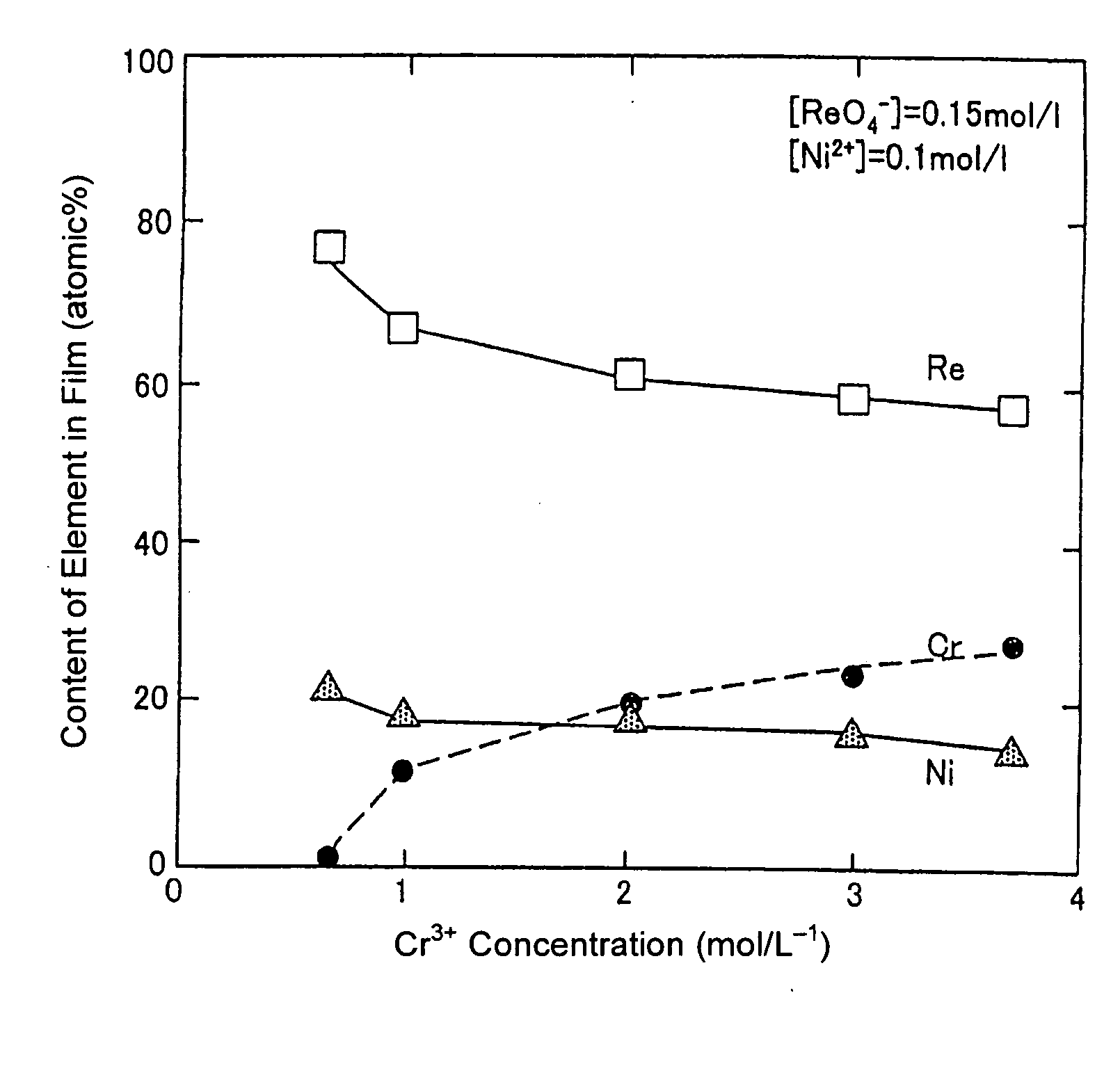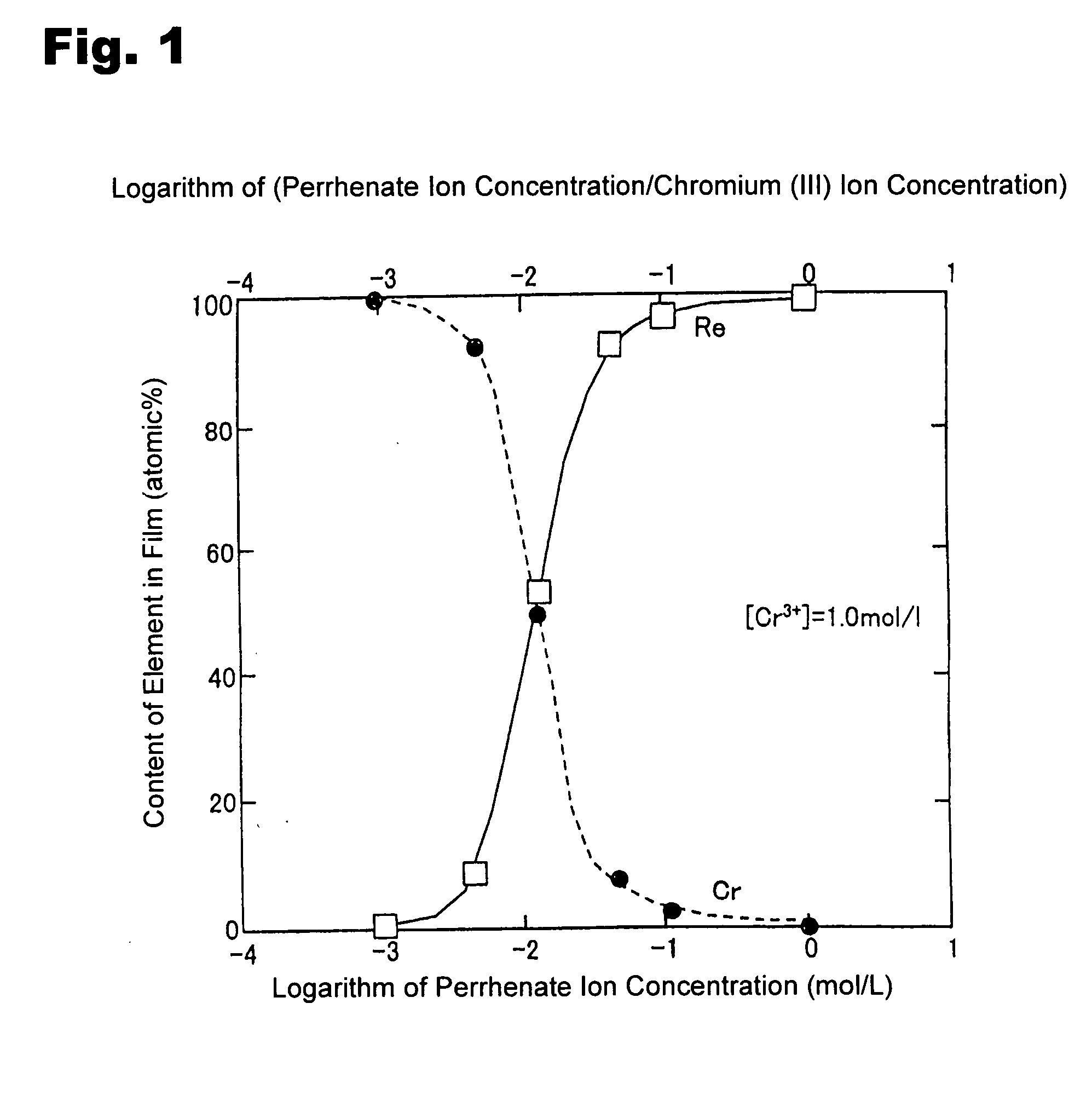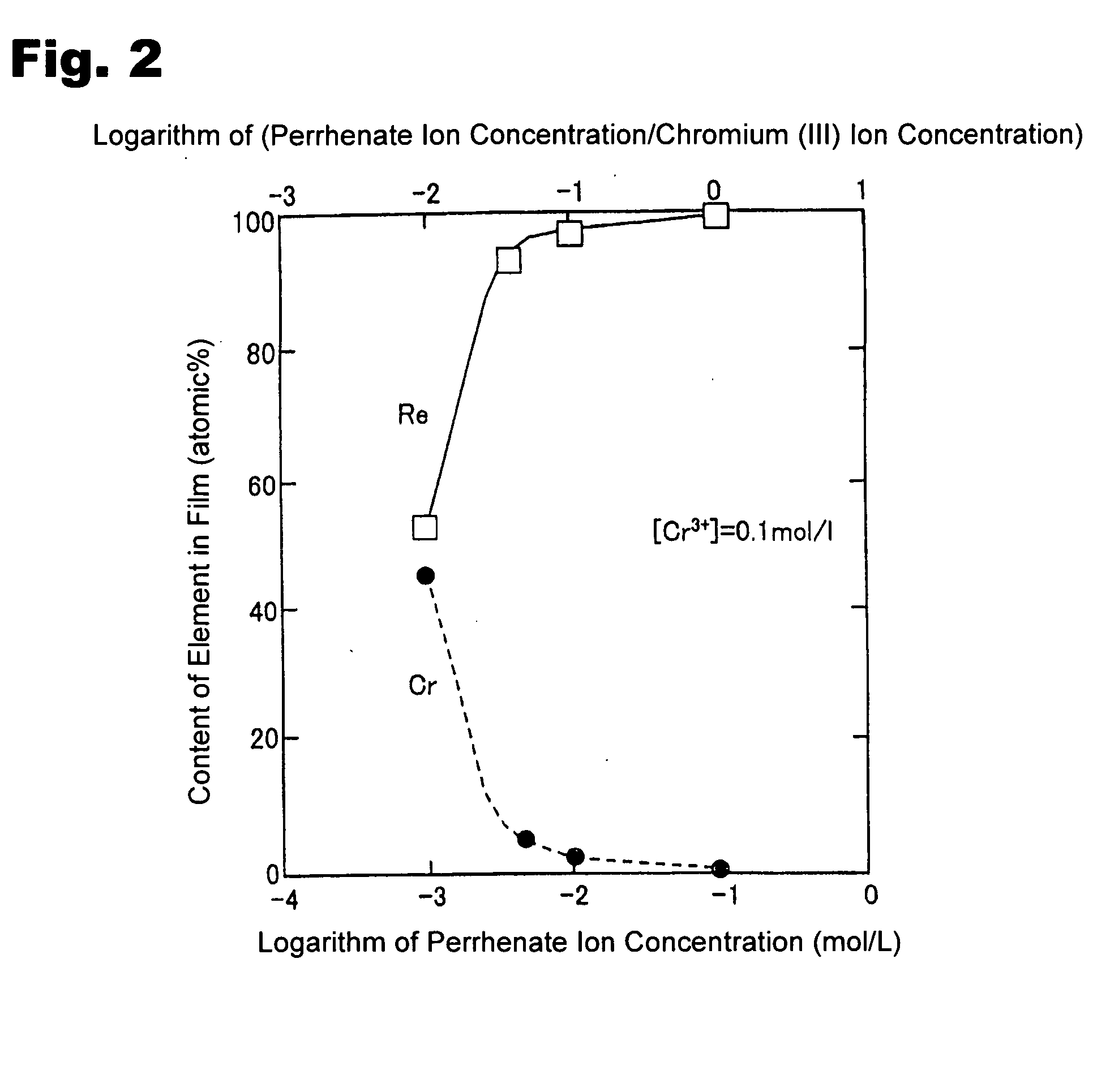Method for forming re coating film or re-cr alloy coating film through electroplating
- Summary
- Abstract
- Description
- Claims
- Application Information
AI Technical Summary
Benefits of technology
Problems solved by technology
Method used
Image
Examples
##ventive example 1
INVENTIVE EXAMPLE 1
[0040] A copper plate was subjected to degreasing / cleaning, and used as a substrate. A solution was prepared using chromium chloride to have a Cr3+ ion in a concentration of 1.0 mol / L and a ReO4− ion in a concentration of 0.005 mol / L. In addition to the ReO4− ion and Cr3+ ion, 1.5 mol / L of acetic acid, 0.5 mol / L of ammonium chloride and 0.5 mol / L of potassium bromide were added to the solution to prepare a plating bath. The pH of the plating bath was adjusted at 4 using sulfuric acid and sodium hydrate. Then, an electroplating process was performed under a plating bath temperature of 35° C. and a current density of 100 mA / cm2.
##ventive example 2
INVENTIVE EXAMPLE 2
[0041] Except that the concentration of the ReO4− was set at 0.01 mol / L, an electroplating process was performed under the same conditions as those in Inventive Example 1.
##ventive example 3
INVENTIVE EXAMPLE 3
[0042] Except that the concentration of the ReO4− was set at 0.05 mol / L, an electroplating process was performed under the same conditions as those in Inventive Example 1.
PUM
| Property | Measurement | Unit |
|---|---|---|
| Temperature | aaaaa | aaaaa |
| Fraction | aaaaa | aaaaa |
| Fraction | aaaaa | aaaaa |
Abstract
Description
Claims
Application Information
 Login to View More
Login to View More - R&D
- Intellectual Property
- Life Sciences
- Materials
- Tech Scout
- Unparalleled Data Quality
- Higher Quality Content
- 60% Fewer Hallucinations
Browse by: Latest US Patents, China's latest patents, Technical Efficacy Thesaurus, Application Domain, Technology Topic, Popular Technical Reports.
© 2025 PatSnap. All rights reserved.Legal|Privacy policy|Modern Slavery Act Transparency Statement|Sitemap|About US| Contact US: help@patsnap.com



